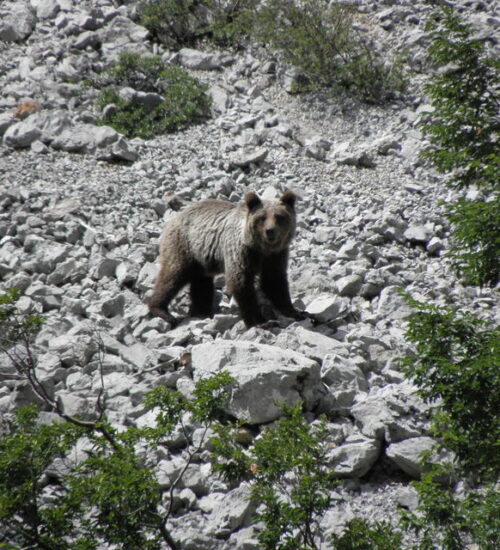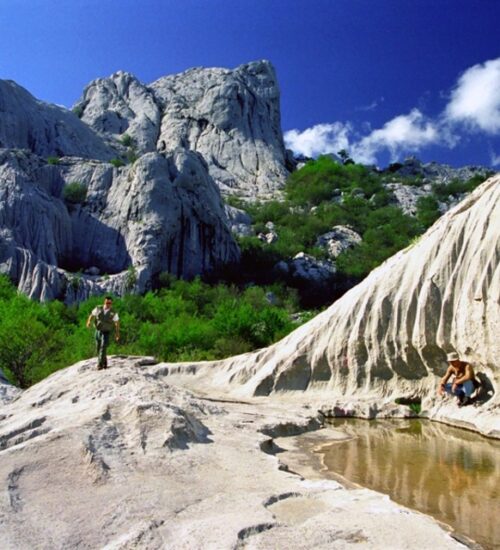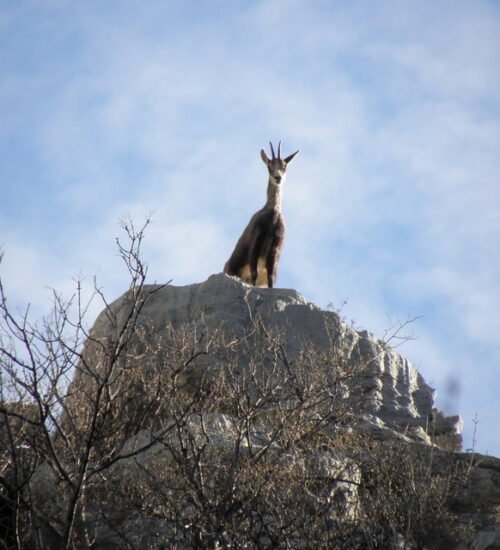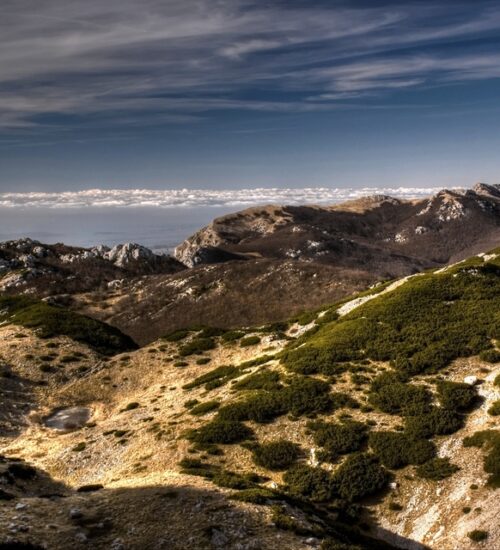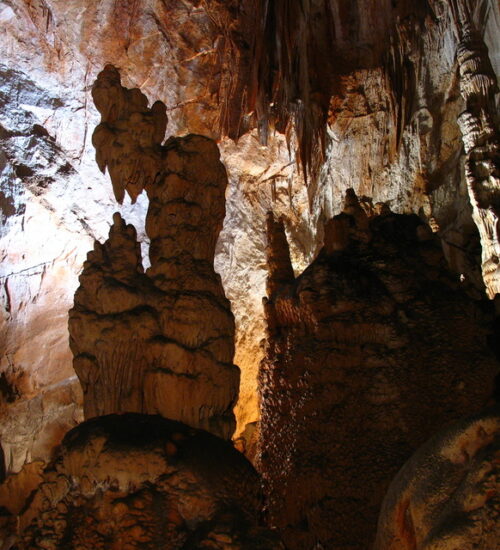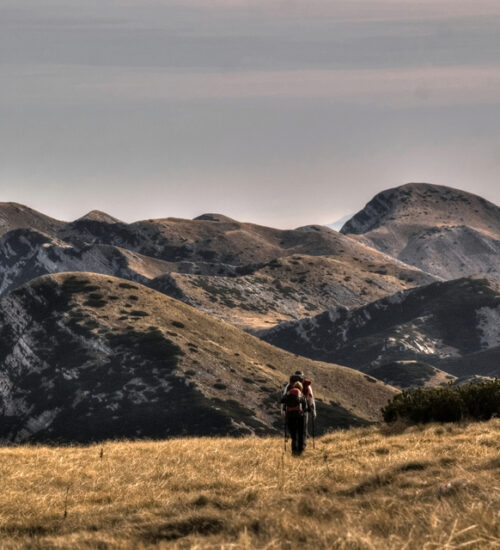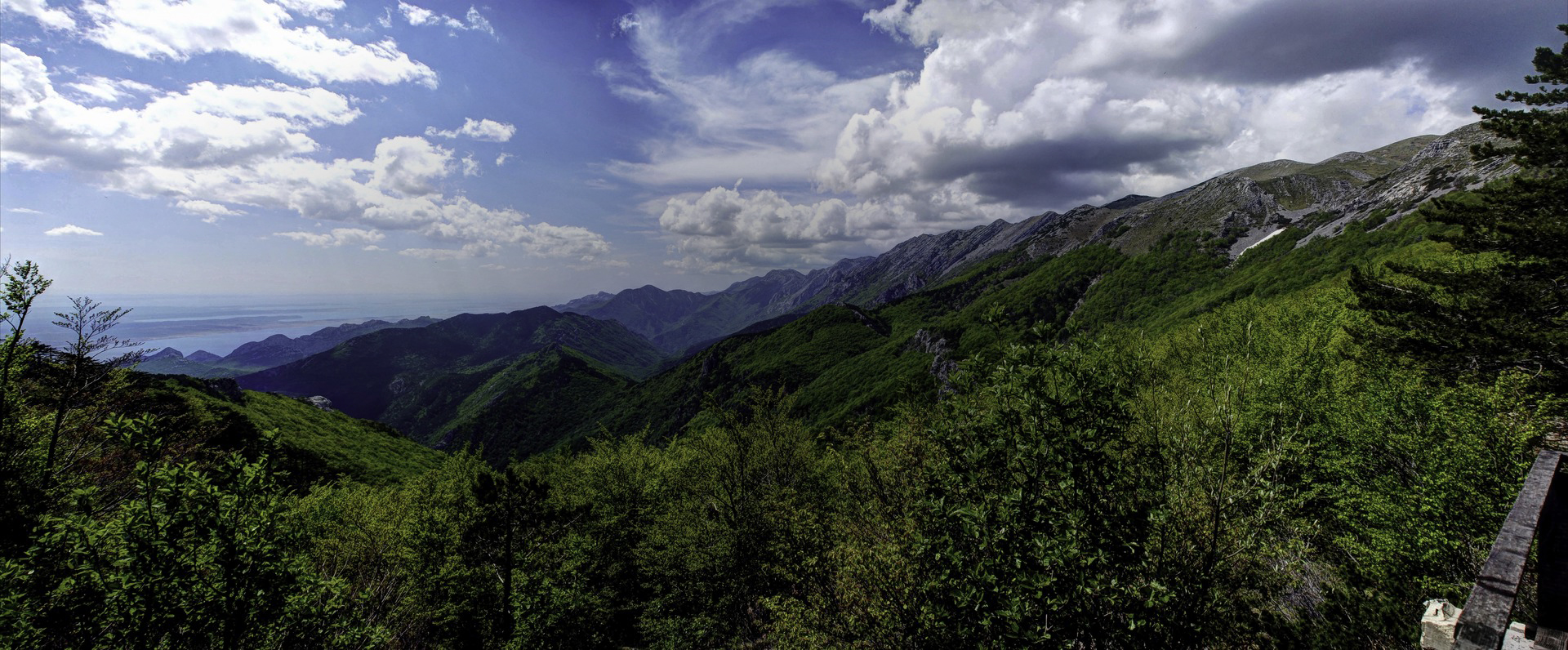


Location
National Park Paklenica spreads on the south of Croatia, on the coastal slope of southern Velebit, at the entrance to Velika Paklenica Canyon with a height of only ten meters, to the zone of the highest peaks at 1,757 meters. It covers an area of 95 km2.
History
The Law on Proclamation of Paklenica forest a National Park was adopted in 1949, and amended half a century later, in 1997.
The Park enjoys international protection as well, as the MAB-UNESCO biosphere reserve.
Nature
The National Park includes the most attractive area of the southern slope of Velebit, impressive canyons of Velika (Big) and Mala (Small) Paklenica. Velika Paklenica canyon, length of 14 km, at its narrowest point is wide only 50 meters. On both sides of the canyon, the vertical rocks rise, some of which are high even up to 700 m. Mala Paklenica canyon has smaller dimensions. It is 12 km long, and at its narrowest point is only 10 m wide, while the surrounding rocks rise to a height of 650 m. For the central part of the Park the relief complex of Borovnik and Crni vrh is characteristic, while along the southern part Borovnik spreads, named after the black pine forest. The highest area of the National Park Paklenica is narrow ridge of Velebit, 1-3 km of width. There is the highest point of Velebit, Vaganski vrh (peak) at 1757 meters. On a relatively small area there is an outstanding abundance of geomorphologic phenomena and forms, diverse plant and animal life, attractive landscapes. The richness of plant life is reflected in more than 1,000 plant species and subspecies, of which 79 are endemic. It is characterized by great diversity, the presence of relict, endemic, rare, protected species, of which a large number is in the Red Book of the species of Croatia, as well as on the IUCN Red List of endangered plant species. Fauna consists of approximately 250 species of birds, 30 species of amphibians and reptiles, and more than 50 species of mammals. From the large species in the area of the Park can be encountered: doe, deer, chamois, wild boar, brown bear, wolf, lynx, fox and wild cat. Among the 254 species of birds, nearly half of them are nesting. Special values of the Park are the endangered and rare species of birds of prey such as the golden eagle, short-toed eagle and hawk.
Sights
National Park Paklenica is abundant in numerous karst relief forms, including a very significant underground forms, caves and sinkholes. The first written records of speleological objects research in the area of the Park date back from the 19th century. Processed speleological objects extremely increase the value of the National Park, because those are significant paleontological, archaeological, bio-speleological, tourist and ethnographic sites. Very valuable paleontological sites are Špilja (cavern) in Zub Buljme and Jama (Cave) in Zub Buljme. Thus, from the Caves in Zub Buljme a skull of the cave bear (Ursus spelaeus) about 30 000 years old was taken out. In the cave in Pazjanice fragments of pottery and bones were found that indicate presence of people in this area back in the Bronze Age.
Tourism
Walking is the only way to really get to know and for the true experience of Paklenica. In the Park area there are more than 150 km of trails and roads: from tourist, which lead from the canyon to the cave Manite peći, from forest houses “Lugarnice” and the mountain hut, to the mountain trails that lead to the highest peaks of Velebit. Paklenica is the most important Croatian climbing center, known also outside of Croatian borders. The special charm of this climbing center is its proximity to the coast, making Paklenica Riviera an ideal place to combine climbing and water sports. On the climbing area of Paklenica, there are approximately 400 equipped and arranged directions of varying difficulty and length (grades 3 to 8b +), so every climber can find something for their pleasure.
Connection
The National Park can be reached from several directions. From the direction of Zagreb (235 km) the quickest way is by the highway Zagreb-Split. Descent of the highway is at the knot Maslenica, and afterwards continues for 15 km by the highway in the direction of Rijeka. If you come from the direction of Rijeka, the Adriatic Highway should be taken- state road D8 (182 km) or the highway Rijeka (A6) – Maslenica (A1) – 257 km. From the direction of Split the fastest way to come is by the highway Split – Dugopolje (A1) -Maslenica (A1) -137 km. The nearest airport in Zadar, which is from Starigrad Paklenica only about half an hour away, is well connected with all major Croatian and European cities.
Contact
Address:
Public Institution National Park Paklenica
Dr. Franje Tuđmana 14a, HR – 23244 Starigrad-Paklenica
Telephone:
+385 23 369 155
+385 23 369 202
+385 23 369 803
+385 23 359 133
Web: www.np-paklenica.hr
Mail: np-paklenica@paklenica.hr

